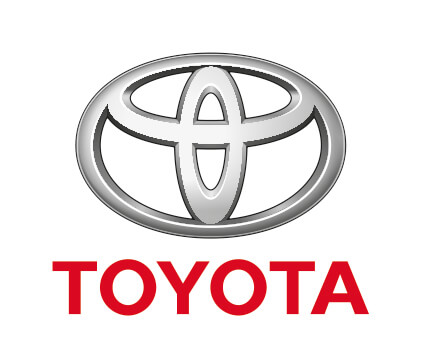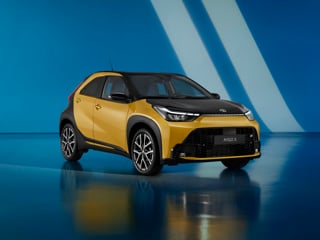A year ago Toyota and Lexus were in the headlines for all the wrong reasons.
The company had undertaken a massive global recall following reports of ‘unintended acceleration’ in some cars.
About 180,000 cars in the UK were affected, and although the fix was carried out on those models well within the target time period, the incident had a major impact on the organisation globally.
Both Toyota and Lexus had a solid reputation for making among the most reliable cars on the roads, validated in independent surveys across the globe and, ultimately, customers will benefit from changes made to procedure since the recalls.
Ewan Shepherd has been responsible for fleet sales at Toyota and Lexus since November 2010, but during the recalls he was general manager of Lexus operations and says it was a challenging time for both brands.
“In a way, we had let our own quality slip so it was no better than any other brand,” says Shepherd.
Toyota, as a company, faced attacks in the media for the speed at which it was reacting to the faults, although a year on after many investigations into these individual reports there has been no evidence of the electronics in the vehicles being at the root of the faults and some have since pointed to driver error.
However, the company focused on the problem and how it could avoid such a widescale recall event happening in the future. It appointed a global quality committee, while each region (including Europe) has a quality committee.
It means any potential faults that could result in a vehicle being recalled are spotted earlier.
Shepherd says that although there were no reports of incidents as a result of the faults in Europe, it has made the company extremely vigilant.
He adds that, perhaps ironically, the new strategy could result in a greater number of Toyota recalls as potential problems are spotted sooner than they might otherwise have been, while he suggests the cars produced by Toyota and Lexus since the recalls last year would be their best ever quality.
It used to be frowned upon to mention Lexus in the same breath as Toyota. Although part of the same organisation, Toyota worked hard to ensure Lexus had its own identity to ensure it became accepted as a premium brand.
Perhaps now confident that customers recognise both Toyota and Lexus as separate entities, fleet customers have recently been given a streamlined process of dealing with both brands.
The Lexus brand, since its introduction in 1990, has stood out as an industry leader for customer service, and Shepherd says in bringing the teams for Lexus and Toyota together has helped share best practice.
According to Shepherd, the move to bring customer-facing teams together for both brands was important to ensure its future success.
He says: “We had a field sales force for Lexus of three people who had to cover the whole country. Toyota had a field force of 30 people.
“We weren’t getting the coverage we needed for Lexus, and particularly with a car like the CT200h coming we needed to expand the Lexus fleet team.
“In many cases we had two relationships with the same customer: two people would need to visit customers, we had two people looking after residual values.
“So the change was made as a result of customer feedback, and so far it has been very successful.
“Lexus is now in front of many more companies and we’re able to communicate the cost of ownership story. There is some work to do yet, but we are seeing a lot of interest in the CT200h with the first six months of orders spoken for.”
The CT200h is the latest in a line of Toyota and Lexus hybrids. It shares its engine and hybrid components with the Toyota Prius and Auris hybrid, and is a unique proposition in the premium lower-medium car sector.
Although the CT200h adds to the growing range of Lexus hybrids, it also boosts the sub-100g/km offering available from Toyota, which includes the Prius and Auris, as well as the 1.0-litre version of the Toyota IQ city car.
This is beneficial for drivers as well as fleet operators: the lowest band for company car tax is currently 10% and, being fuelled by petrol rather than diesel, none of these cars carry the 3% supplement imposed on diesel cars.
The benefit to the fleet operator is that National Insurance contributions are also set against the lowest BIK tax band, and any fleets that need to operate within the London congestion charge zone will also benefit from a full discount on cars emitting CO2 at less than 100g/km offering a potential saving of about £2,500 a year for those that drive into central London each day.
Although all Lexus hybrids registered before January 2011 are still eligible for the full congestion charge discount, any of the larger hybrids registered after
January 4 no longer qualify as the discount is now only available to cars with CO2 emissions below 100g/km.
Although its large hybrid range includes the remarkably tax-efficient RX450h, with CO2 now at 145g/km, the GS450h and LS600h are both strong on straight-line performance but are not as competitive as the RX against diesel rivals. However, Shepherd says there could be smaller engine versions of future hybrids, helping reduce CO2 emissions further.
The company is also continuing to develop its networks of specialist business centres.
Toyota has 100 such centres. All 50 Lexus sites can handle business sales, while 40 of them are designated business sales specialists, some sharing sites with Toyota, which also have that status.
There is a ‘business customer commitment’ that guarantees service levels for clients (see panel, opposite page).
In December 2010, business centre staff received training to ensure they can give customers guidance on tax issues, and Shepherd believes it will help add to the reputation of the brands for customer service.
“It’s about going beyond expectations,” he said.


















Login to comment
Comments
No comments have been made yet.